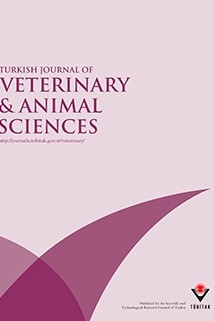
Turkish Journal of Veterinary and Animal Sciences
Yazarlar: Mehmet Şükrü GÜLAY
Konular:-
Anahtar Kelimeler:Dry period length,Milk yield,Dairy cow,Lactation
Özet: The most critical problem for the evaluation of different dry period lengths is the relationship between days dry and subsequent milk production. It is assumed that when a cow is dried off, the loss in the current lactation will be compensated for by greater milk production during the following lactation. However, the process of parturition and initiation of lactation are extremely important events and they are associated with many problems that may result in removal of the individual cow from the herd or in greatly reduced milk production, especially early in the lactation. Therefore, identification of the shortest possible dry period that would allow maximum milk production after parturition is crucial. Indeed there are only a limited number of studies, experimental and observational, that have been conducted to establish the association between minimum dry period and maximum milk yield (MY) in the lactation that follows the dry period. This review will try to address both observational and experimental data to give an understanding about the topic.